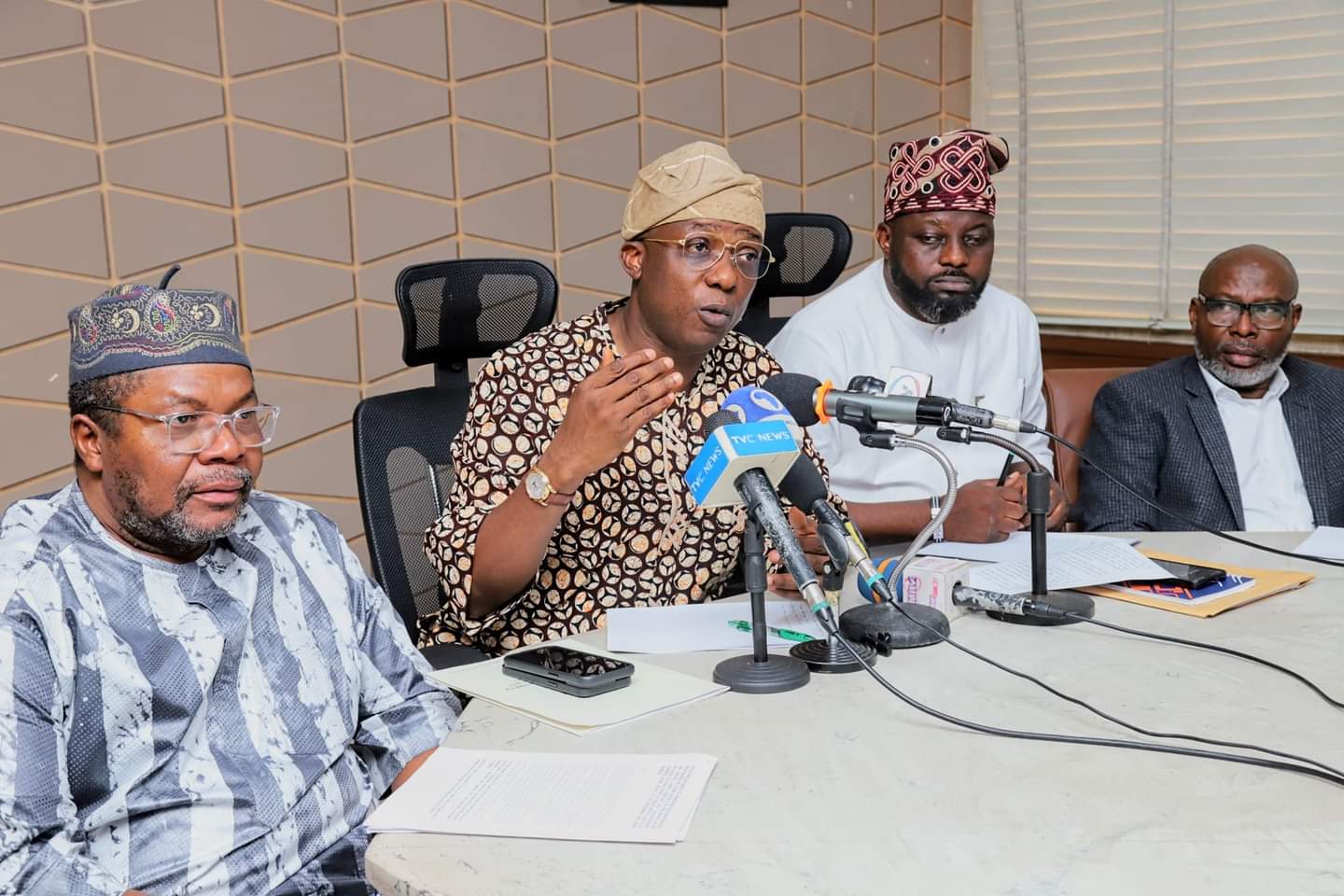EKO NEWS
Brace Yourself; Here’s How Much Rainfall You Can Expect In Lagos In 2024

-
Lagos is known for experiencing high degrees of rainfall yearly.
-
This excessive rainfall often leads to flooding in Nigeria’s commercial capital.
-
The state is now warning residents that there will “more than normal rainfall” in 2024.
Eko Hot Blog reports that Lagos State Government has announced that the state is expected to experience “more than normal amount of rainfall” during the year 2024 rainy season with a total of 1936.2mm predicted rainfall.
Commissioner for the Environment and Water Resources, Mr. Tokunbo Wahab made this disclosure on Tuesday at a media briefing on the Seasonal Climate Predictions (SCP) and the Socio-Economic Implications for Lagos State held at the Ministry’s Conference Room, Alausa.
EDITOR’S PICKS
Wahab noted that the annual briefing is to alert Lagosians of the climate patterns and its socio-economic implications for residents.

Lagos Commissioner for Environment and Water Resources, Mr. Tokunbo Wahab, at a media briefing on the Seasonal Climate Predictions
He stressed that the average annual rainfall amount predicted for 2024 is 1936.2mm which is greater than the long-term average of 1721.48mm with the onset date expected to be the first week of April and ceasing in the first week of December.
The environment commissioner said Ikeja is expected to have an onset date of 4th April and a cessation date of 4th December with a high annual amount of 1900mm rainfall.
He added that Badagry is expected to have a rainfall onset date of 1st April and cessation date of 5th December resulting in an annual amount of 1978mm while Ikorodu is expected to have a rainfall onset date of 4th April and cessation date of 4th December totaling an annual amount of 1903mm.
Speaking further, Wahab mentioned that Lagos Island is expected to have a rainfall onset date of 3rd April with cessation date of 4th December and an annual amount of 1936mm while Epe is expected to have a rainfall onset date of 2nd April, cessation date of 5th December and an annual amount of 1952mm.
The commissioner noted that below-normal rainfall amounts are anticipated in the first half of the rainy season while normal to above-normal rainfall amounts are expected in the second half of the rainy season.

Lagos Commissioner for Environment and Water Resources, Mr. Tokunbo Wahab, at a media briefing on the Seasonal Climate Predictions
He reiterated that the environment ministry’s collaboration with NiMet annually on the Seasonal Climate Prediction has been valuable as a vital weather and early warning tool for farmers, decision-makers, operators of the various sectors and businesses that are likely to be impacted by the annual rainfall.
Wahab also said the government had plans to downscale the Seasonal Climate Prediction to stakeholders and emergency workers in the State, adding that the state had deployed and maintained its network of weather stations and river gauge stations to monitor the weather and river levels in the state and increase the preparedness for weather and flood-related issues.
He noted that to effectively contain flooding in the state, the government is determined to maintain the synergy and partnership with the Ogun-Osun River Basin Authority (OORBDA), stressing that the rainfall from neighbouring Ogun, Oyo and Osun States, dams release and river water levels into the State will also be monitored.
The commissioner said the partnership has in years past ensured control and monitoring of the steady and systemic release of water from Oyan Dam to prevent flooding of the downstream reaches of the Ogun River, saying the mutual relationship has been highly beneficial and will be sustained.
Wahab further stated that proactively, the State has strengthened the Flood Early Warning Systems (FEWS) to deliver reliable, timely and effective flood information at an appropriate response time, adding that the low-lying Agiliti, Agboyi, Itowolo and Ajegunle communities will be closely monitored with respect to the likelihood of Ogun River flooding as well as all other river basins in the State.
He explained that it is expected that the high amounts of rainfall and other contributory factors may lead to flooding events in some parts of the State while leading to a rise in Lagoon level, saying that anytime there is high tidal movement, it may “lock up” the discharge points of drainage channels and until it recedes.
The commissioner noted that such occurrences can cause backflow resulting in flooding and as soon as the Lagoon recedes, all the generated stormwater will immediately be discharged and the roads will be free, stressing that it is only when stormwater remains on the roads for hours that there should be reports of flooding.
He stressed that the government had put all emergency response organisations, traffic management organisations and other emergency-related organisations on high alert to help lessen the detrimental effects of thunderstorms and associated rains in the State.
FURTHER READING
Therefore, according to Wahab, the government will ramp up sensitisation for residents along flood plains of major rivers such as Owode, Iwaya, Makoko, Badia, Ijora, Isaalu, Pota, and Shibiri to be alert and ready to relocate to higher grounds when the need arises, adding that Drainage Engineers are available in all 57 LGA and LCDAs to attend to drainage related matters during and after the rainy season.
Click here to watch video of the week:
Advertise or Publish a Story on EkoHot Blog:
Kindly contact us at ekohotblog@gmail.com. Breaking stories should be sent to the above email and substantiated with pictorial evidence.
Citizen journalists will receive a token as data incentive.
Call or Whatsapp: 0803 561 7233, 0703 414 5611

















